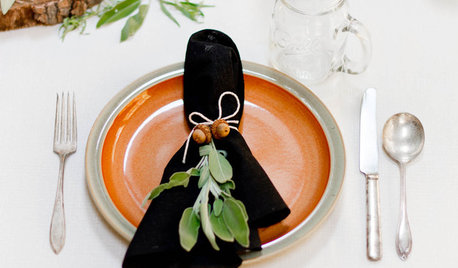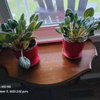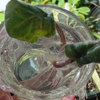First wicking experience failed - what did I do wrong?
Begonia2005
10 years ago
Related Stories


REMODELING GUIDESWhy Marble Might Be Wrong for Your Bathroom
You love its beauty and instant high-quality appeal, but bathroom marble has its drawbacks. Here's what to know before you buy
Full Story
DISASTER PREP & RECOVERYRemodeling After Water Damage: Tips From a Homeowner Who Did It
Learn the crucial steps and coping mechanisms that can help when flooding strikes your home
Full Story
BUDGETING YOUR PROJECTHouzz Call: What Did Your Kitchen Renovation Teach You About Budgeting?
Cost is often the biggest shocker in a home renovation project. Share your wisdom to help your fellow Houzzers
Full Story
LIFEThe Good House: An Experience to Remember
A home that enriches us is more than something we own. It invites meaningful experiences and connections
Full Story
MOST POPULARExperience the Holidays at Frank Lloyd Wright's Home and Studio
Handmade decorations, greenery and gifts show how the famed architect and his family celebrated Christmas in their Oak Park home
Full Story
MOST POPULARFirst Things First: How to Prioritize Home Projects
What to do when you’re contemplating home improvements after a move and you don't know where to begin
Full Story
GARDENING GUIDESHow I Learned to Be an Imperfect Gardener
Letting go can lead to a deeper level of gardening and a richer relationship with the landscape. Here's how one nature lover did it
Full Story
BATHROOM DESIGNDreaming of a Spa Tub at Home? Read This Pro Advice First
Before you float away on visions of jets and bubbles and the steamiest water around, consider these very real spa tub issues
Full Story
REMODELING GUIDESConsidering a Fixer-Upper? 15 Questions to Ask First
Learn about the hidden costs and treasures of older homes to avoid budget surprises and accidentally tossing valuable features
Full StorySponsored
Franklin County's Full Service, Turn-Key Construction & Design Company
More Discussions








Whitelacey
Whitelacey
Related Professionals
Baltimore Landscape Architects & Landscape Designers · Lake Oswego Landscape Architects & Landscape Designers · Roosevelt Landscape Architects & Landscape Designers · Signal Hill Landscape Architects & Landscape Designers · South Orange Landscape Architects & Landscape Designers · Hartford Landscape Contractors · Jackson Landscape Contractors · Stamford Landscape Contractors · Brunswick Landscape Contractors · Canyon Lake Landscape Contractors · Chattanooga Landscape Contractors · Eagle Landscape Contractors · Hoffman Estates Landscape Contractors · Hoover Landscape Contractors · Waipahu Landscape ContractorsBegonia2005Original Author
petrushka (7b)
Whitelacey
Begonia2005Original Author
petrushka (7b)
perle_de_or
philpet
perle_de_or
philpet
petrushka (7b)
irina_co
philpet
petrushka (7b)
philpet
irina_co
petrushka (7b)
irina_co
petrushka (7b)
taras1
irina_co